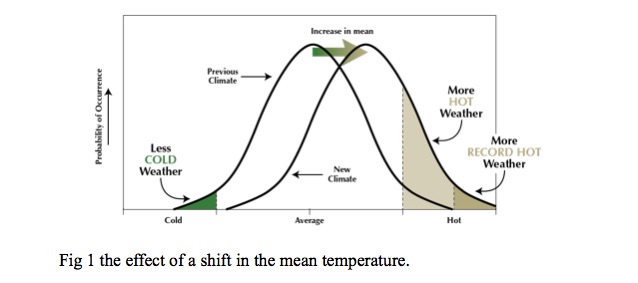
Coping With A Changing Climate
A recent report issued by the UN Development Program, the Global Environmental Facility and the Government of Australia, evaluating the preparedness of Sri Lanka to deal with Climate Change pointed out the a lack of “awareness about climate change impacts on the livelihood among farmers and local government officials, especially those engaged in water management and agriculture extension”. This is not the first warning; we have had plenty of time to deal with this need. An article titled; Climate Change’ published in 2011 asked of the outcome of the Durban meeting that our climate change experts went to:
“While awaiting to hear of the brilliant contributions that Sri Lanka has made to the just concluded United Nations Framework Convention on Climate Change (UNFCCC), conference in Durban, the view from Durban is somewhat clouded. The global polluters are demonstrating extreme disdain of accepting any responsibility they have to the rest of humanity who share a common atmosphere with them. The unilateral move by Canada in withdrawing from the Kyoto Protocol, a move endorsed by the fossil energy industry, demonstrates how much public interest has been eroded from political enclaves.
The UNFCC itself is a lame duck, it is still unable to recognize or identify the difference in value of carbon originating from biotic sources and fossil sources. This fact is commonsense; that while a diamond, petroleum, a lump of coal, piece of wood or piece of fruit is comprised of carbon, they are not the same, and they have different values. So in burning them up we have to recognize the value (cost) of each. The carbon dioxide that emanates from them by burning is also different. The carbon dioxide from biotic carbon will always have the carbon isotope C14, while carbon dioxide from fossil carbon will never contain C14. In time, the differences are in millions of years. This much is common knowledge, most high school children are already aware of these facts. Then why has the UNFCC chosen not to ‘see’ that there is a value and temporal difference between biotic and fossil carbon cycles? A cynic might say that many are in the pay of the energy industry. But, what about our Sri Lankan scientists who attended Durban? Surely they will never sell out to the energy industry! Perhaps they have already identified these fundamental structural flaws within the UNFCC and we might see this stand reflected in their reports.
In the meanwhile, apart from the innumerable conferences and workshops that we could have, what should we do in Sri Lanka? This question has come sharply into focus with the news that Russian scientists have discovered hundreds of plumes of methane gas, some over 1,000 meters in diameter, bubbling to the surface of the Arctic Ocean. Methane is about 20 times more powerful than carbon dioxide as a greenhouse gas. Dr.Igor Semiletov of the Russian Academy of Sciences stated in a recent interview “ Earlier we found torch-like structures like this but they were only tens of meters in diameter. This is the first time that we’ve found continuous, powerful and impressive seeping structures, more than 1,000 meters in diameter. It’s amazing.”
All this points to the need for immediate action. Landscapes are slow to respond to rapid changes. The effect of the increase in storm force was apparent all last year. By now we should have had some national adaptation strategies. Yes, there has been a plethora of conferences around the subject, but what do I do if my drinking water runs out? What do I do if there is salt intrusion into my field? How do I deal with sudden windstorms? If the years spent on discussing adaptation had borne any fruit, we would now be seeing public education programs on climate change preparedness by now. “
Sadly, today, in 2016 we have the UNDP stating that in Sri Lanka there is a lack of “awareness about climate change impacts on the livelihood among farmers and local government officials, especially those engaged in water management and agriculture extension”
It is now patently clear that we will face a scarcity of food as the global temperatures rise. Chlorophyll, the primary material of life begins to denature as the 39degree threshold is passed. We are already witnessing 40 degree plus temperatures in many nations with the probability of exposure times increasing (fig 1). Should we not have been conducting tests on heat resistant crops or adaptive landscapes ?
Compounding the hypocrisy that is being foisted on us. There is the spectacle of Sri Lanka signing the Paris Accord to keep global temperatures under control by limiting out carbon output while gleefully promoting the construction of mega cities with no concern of their carbon footprint. When we consider that for every ton of concrete we emit 800 kgs of CO2 and every ton of steel is responsible for 1.2 tons of CO2, who has reported on the increase in CO2 emissions by this giant city building exercise? If the climate change secretariat has failed to account for both the construction and operational CO2 costs of construction in Sri Lanka, we would be cheating in our international obligations.
The impact of climate change is serious, there is a universal need to be educated and prepare for the consequences. We have been very delinquent in this regard as stated by the UNDP study. Hiding our heads in the sand will not make the problem go away. Increasing our carbon footprint in the name of ‘economic development’ is certainly an act of shooting ourselves in the foot and increasing the impact of climate change!
Source : 30th October 2016; Colombo Telegraph https://www.colombotelegraph.com/index.php/coping-with-a-changing-climate/



